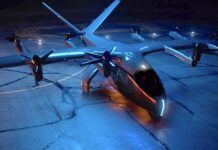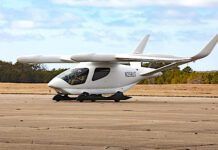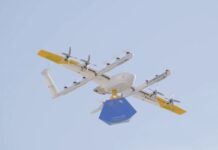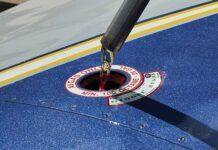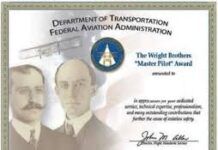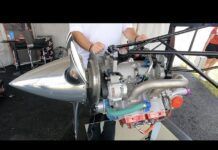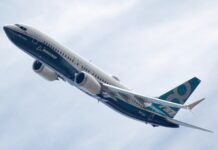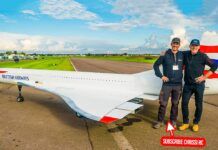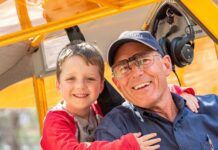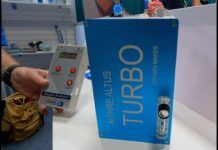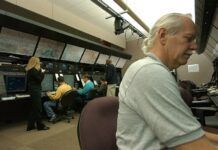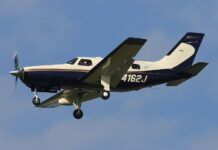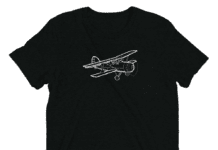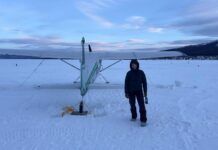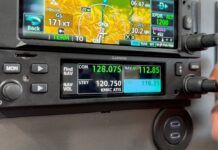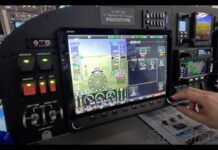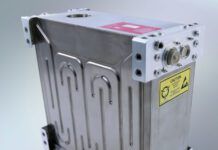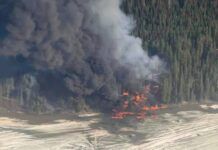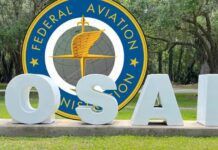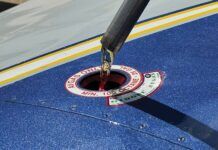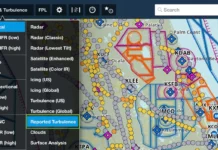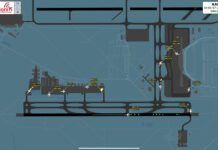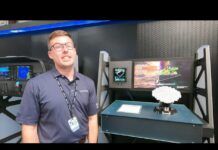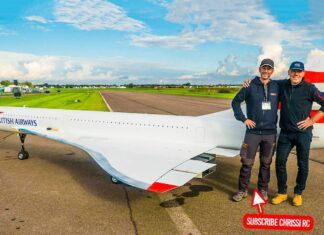It’s been my good fortune to work and socialize with a number of test pilots during my career. There has been a lot of publicity and hype about test pilots ever since the Montgolfier brothers made the first flight of an aircraft in 1783-some of it has even been true. My own perspective is that the very good test pilots tend to be quiet to the point of reticence until they get to know you, have the ability to split a second into more parts than the rest of us-which may explain their quickness of reaction and thought, and have a certain level of confidence in their abilities that comes from having the cockiness of youth knocked out of them by aircraft that made serious attempts to kill them.
Types of Flight Test
Before going further, it’s necessary to point out that there are three different types of flight test: experimental, production and service. Service testing generally involves flights made after maintenance and of new airplanes that are almost ready for production but the manufacturer wants to put a bunch of time on them in a hurry to see what’s going to break. As test flying goes, it’s low risk. Production testing means the first flights after airplanes roll off the line in order to identify squawks so they can be fixed prior to delivery to the customer. Usually, it’s low risk. However, production test pilots often wear parachutes on first flights-some have had to use them. Experimental flight testing is where high risk resides. It includes first flights of off the drawing board aircraft and exploration of their operating envelopes. Despite everything that can be done to assure that the design is safe and the prototype has been assembled with care, things have gone south on first flights and envelope exploration flights in general aviation airplanes. Two fatalities that come quickly to mind were in the prototypes of the Cessna 340 and Cirrus SR20.
A few weeks ago a friend of mine who is a retired experimental test pilot, Tom Wallis, sent me a note about some spin testing he did that moved him well along the developmental road from cocky young test pilot to the wise old pelican he became. I think his unassuming words are worth sharing.
During his career as a test pilot for Cessna, Tom made a number of first flights of new models, most notably on the Model T303, one of the very finest-handling airplanes ever built. Following his retirement from Cessna, he was a freelance test pilot for many years. He was involved in flight test programs internationally, including the certification of Wipline amphibious floats on the DeHaviland Twin Otter and the first flights of a replica of the historic Sikorsky S-38.
Tom’s words are in italics.
In early 1978, Cessna decided to produce a variation of its aerial application aircraft, the A188B AgTruck, with a turbocharged engine. This was in response to requests from customers in the west, operating at higher density altitudes and struggling to haul heavy loads. The final design incorporated a slightly different version of the Continental IO-520 with a ground adjustable wastegate and a new three-blade, wide-chord propeller. It was designated the T188C AgHusky, and I was assigned as project pilot.
First Flight
The first flight went well. I liked the smoothness of the engine/propeller combination a great deal. That spring and early summer I completed all the CAR 3 (forerunner of today’s FAR 23 certification regulations) Stability and Control tests, and gathered the necessary climb and cruise data for the Pilot’s Operating Handbook. I thought the airplane had better low altitude performance than the A188B, and certainly much improved altitude performance, as was expected.

Before starting spin testing, my flight test engineer (FTE) and I went through the available literature on predicting spin behavior-there wasn’t much. We focused on the change in inertia about the pitch and yaw axes caused by the heavier engine/propeller combination. Without more data, our predictions seemed little better than educated guesses, although it was obvious that spins would be adversely affected. In addition, the installation of the spin recovery parachute system under and aft of the airframe would make matters worse.
Spin Chute
As with all conventional gear airplanes, the tailwheel makes installing the spin chute a challenge. We eventually removed the tailcone underneath the rudder, and built a truss extending from its attachment to the aft fuselage, under the rudder, and ending with the parachute canister aft of the rudder by a reasonable margin. One of our goals in flight test was to keep things simple, so my choice for the spin chute “deploy” and “jettison” mechanisms (after using a spin chute, you have to get rid of it because you can’t hold altitude once it’s deployed) in the cockpit was a pair of -inch ropes on each side of the pilot’s seat, just below waist height, angling down and forward. Tied to the steel tubing of the cockpit frame under the panel, they extended back through the aft cockpit bulkhead to wire cables running through fairleads to the spin chute. Pulling a rope from aft to forward and down in what is best described as a pushing motion would activate its mechanism.
I decided that the rope on the left should be the deploy control, and the right one the jettison because I would be flying with my right hand and therefore less likely to yank the wrong rope if things got interesting. The structures people did a good job designing the truss and canister arrangement and it passed ground load tests easily. The ropes also did the job, despite their crudeness, in the ground tests. I was confident that it would all work as required in the air. We all were a little worried, I think, that we had, of necessity, made the inertia problem worse because of the spin chute. No one suggested doing the tests without one.
As was customary and cautious, we began the spin program at the usually less critical, most forward center of gravity, gross weight loading. My practice was to start the spins around 10,000 feet MSL (about 8500 feet AGL), and use the section lines for recovery inputs and for defining the length of recovery. All of the normal spins were completed successfully, as were spins with abnormal control usage in recovery and spins out of turns. The airplane was reluctant to enter in all cases. In most cases it didn’t actually start spinning until at least of a turn in the entry phase. The rotation rate was rather slow. There was nothing out of the ordinary.
Aft Center of Gravity
For the first spins at the aft center of gravity, gross weight loading, our chief test pilot, Bruce Barrett, flew the chase airplane, and my FTE manned the camera. I completed the usual turn, left and right, turn, left and right, and turn, left and right spins without any problem. The airplane was, as expected, more responsive to control inputs.

Entry into a one-turn spin to the left initially looked normal; at turn the airplane was steeply nose down. However, at that point it accelerated in yaw and the nose came up rapidly. At the one-turn recovery point, I could see nothing but sky and the rotation rate was very fast. I thought “uh oh,” and quickly applied full right rudder and full down elevator.
Nothing happened. There were 10 to 15 pounds of backpressure in the elevator control (it took 10 to 15 pounds of force to move the stick forward). After one turn I had to look at the section line reference rather far away, since the pitch attitude had not changed-the nose of the AgHusky slopes down away from the cockpit so it had to be quite high to interfere with the forward view.
I went back to pro-spin controls for another turn, and then repeated the anti-spin inputs with the same negative results. The airplane did not respond at all and the backpressure was still there. The rotation rate was fairly fast, 90 to 120 degrees per second, and very stable.
I tried pro-spin and anti-spin inputs one more time. No change. Over the radio, Bruce was commenting on my altitude, and I decided that this flight condition would continue until the airplane screwed itself into the ground.
I pulled the “deploy” rope. There was a soft deceleration, the rotation rate slowed and then stopped as nose simultaneously came down to well below the horizon, all rather gently.
The controls worked again. I pulled the “jettison” rope, the airplane accelerated, I added power (the engine had quit in the spin, but restarted after the chute deployed) and leveled out. As I recall, recovery was complete around 5500 feet MSL.
My FTE in the chase plane counted 12 turns, which was more than I’d counted, so I’d missed a few in the heat of the moment. After seeing where the chute landed, I went back to Cessna.
Change the Inertia

It was obvious that the inertia effect of the heavier engine and propeller along with the spin chute installation had overcome the airplane’s basic stability and aerodynamic control power. In discussions with structures folks, they thought they could lighten the spin chute attachment assembly, and proceeded to do it. Engineers in flight test, aerodynamics, and advanced design groups began thinking about an aerodynamic fix for the elevator back pressure, a positive indicator that the tail was completely stalled-elevator and rudder.
The second flight at the same heavy, aft loading was conducted with a lightened spin chute attachment structure, and a careful re-weighing and loading of the airplane. I decided to start at 11,000 feet MSL for a little more altitude cushion. I performed the turn. turn, and turn spins as before. The airplane seemed to respond a little better in pitch and yaw, indicating that the lightened spin chute installation was a good idea. However . . . the one turn spin to the left had the same result as before with the same backpressure and perhaps a little slower rotation rate-kind of hard to tell.
I tried the normal anti-spin input-nada. I then experimented with ailerons with and against the spin in successive tries, going back to pro-spin for about a turn between tries. I then tried an elevator first technique. Then several normal anti-spin inputs with very rapid control inputs. Nothing worked. I went to the trusty deploy rope at about 4500 feet MSL.
Happily, it worked. After stabilizing in a steep descent I pulled the “jettison” rope. It didn’t release. I tried again-same result. Now I was going down really fast. I finally thought to slow the airplane down as much as possible to lower the tension load on the release hook. I put the flaps down and pulled the stick back until I thought it was as slow as it would go, and then pulled really hard on the rope. It released, and full recovery was obtained at about 700 feet AGL. This time chase counted 32 turns. I took their word for it . . .
Why Didn’t the Chute Release?
Post-flight examination of the spin chute attachment hook showed that the D ring on the end of the chute riser had slightly damaged the hook, preventing its free travel. Sadly, a year or so later we heard that a Piper test pilot had died when, after having his airplane go flat and successfully recovering with the chute, he flew it back to shore (they apparently did their spin testing off the coast near Lakeland) to save the chute. The chute D ring had enough time to damage the hook to the point where it didn’t jettison, and he was then too low to bail out.
The lesson was to ensure that the Brinnell hardness of the D ring and the hook were the same, and to jettison the chute as soon as possible.
We began to work on an aerodynamic means to unstall the tail, since it wasn’t feasible to modify the inertia any further. Several things were tried. I went on two weeks active duty (Tom retired as a colonel in the U.S. Marine Reserve) and Bruce Barrett filled in.

When I returned, I found that the team had developed small delta-shaped strakes ahead of the horizontal tail. At high angles of attack, the delta shape would not stall, but would shed a strong vortex off its leading edge. This high-energy airflow would help to keep the flow attached to part of the rudder and elevator to provide enough control power to overcome the inertia effects.
I re-ran all the longitudinal stability and control tests successfully, and repeated the forward gross spin tests without any problems. I then flew the aft gross loading, and again had to use the chute (right away, this time) in a one turn spin to the left-again-when it didn’t recover at the one turn point. That was a surprise. Investigation showed that the airplane had been loaded measurably aft of the aft center of gravity limit. After fixing that, I completed all the normal spins at aft gross successfully.
So this cocky test pilot (now somewhat less cocky), learned that what Ernie Gann had written was quite true: that sometimes an evil genie is going to piss all over a pillar of science, just for the hell of it.
Tom Wallis is a retired test pilot, now living in Oregon.
Rick Durden is the Features Editor of AVweb and the author of The Thinking Pilot’s Flight Manual or, How to Survive Flying Little Airplanes and Have a Ball Doing It, Vol. 1.



